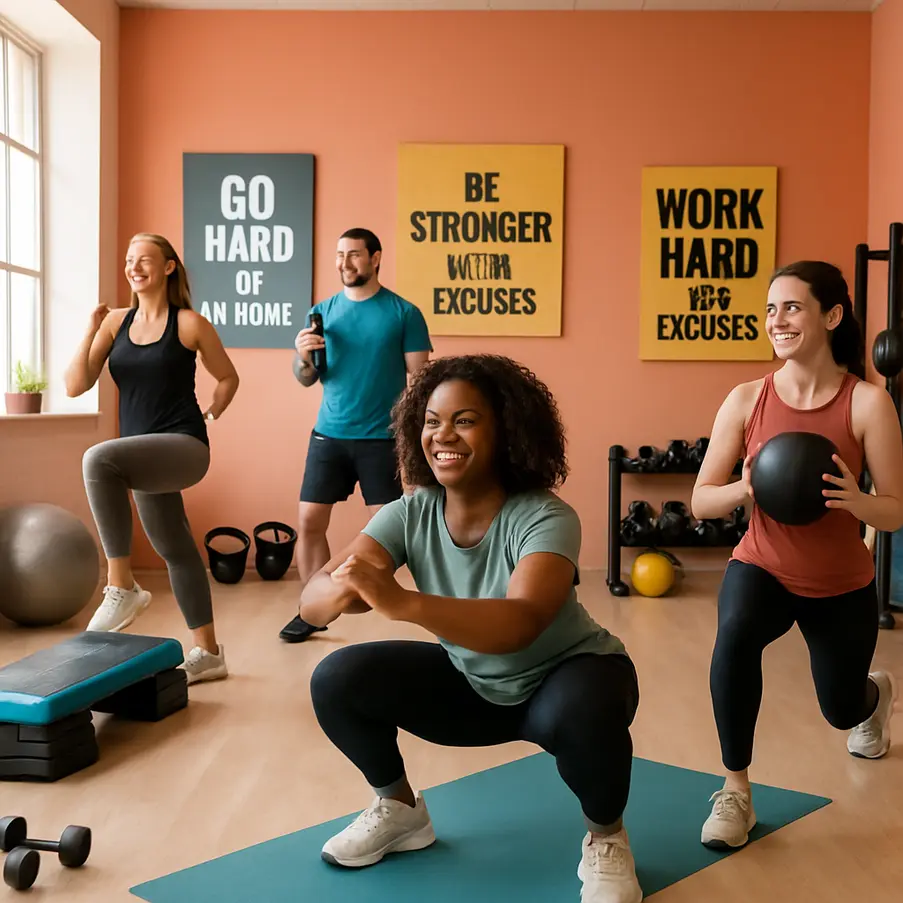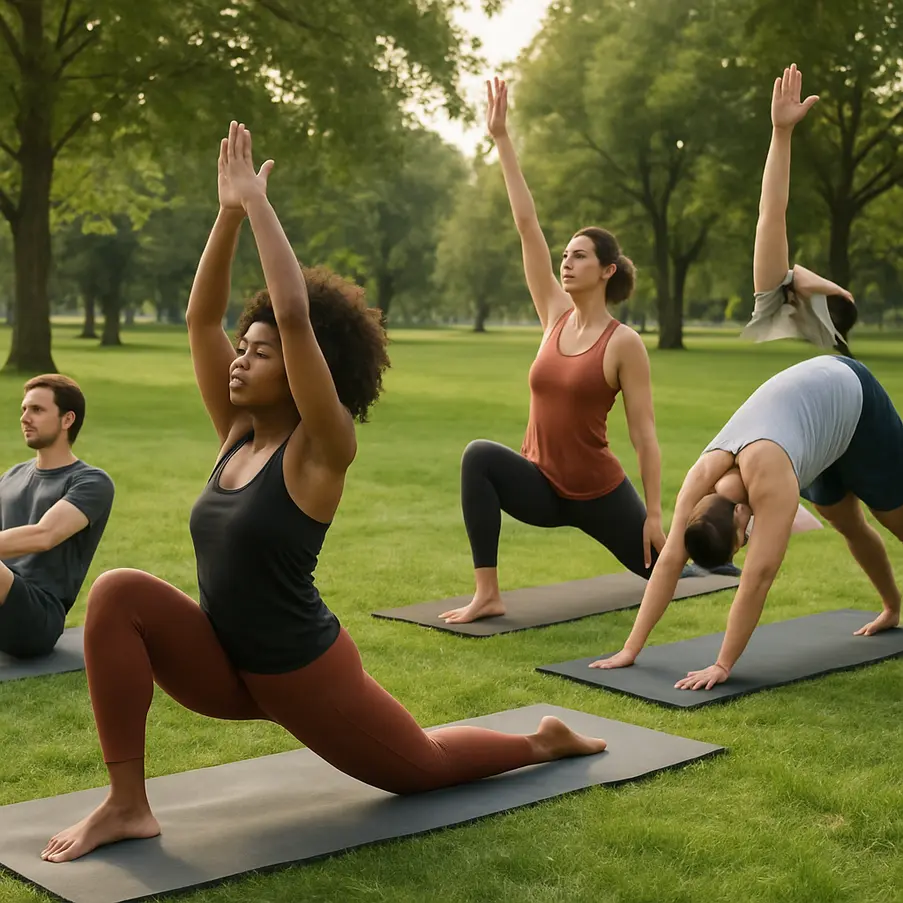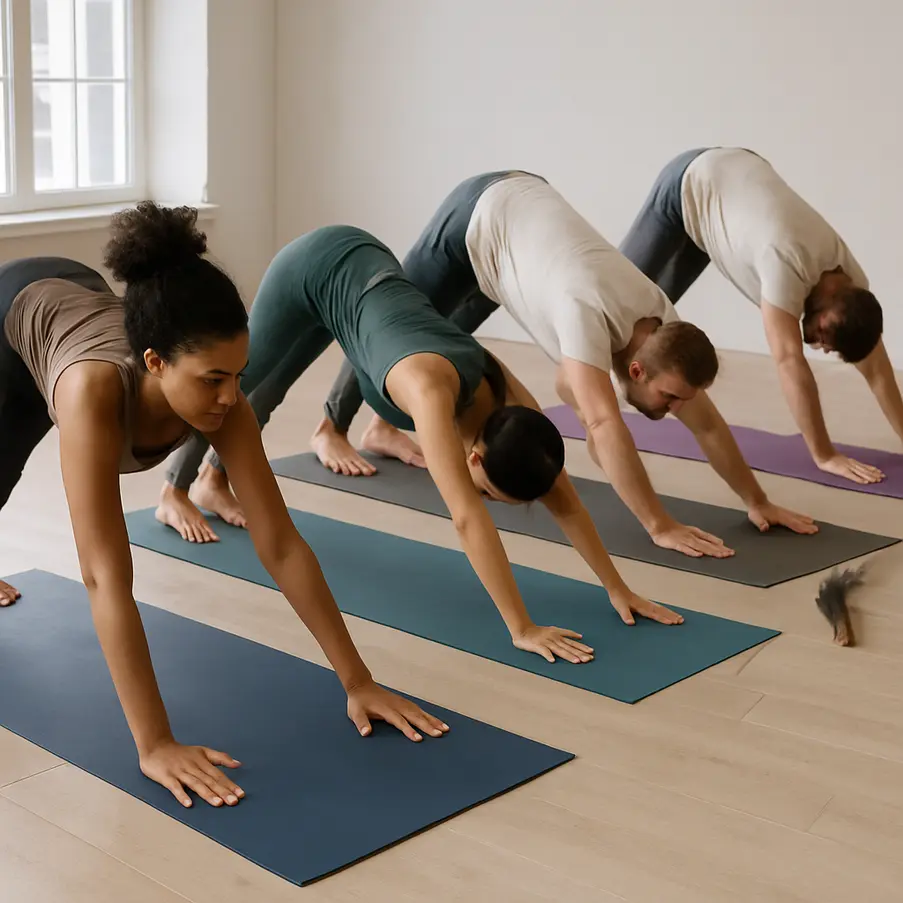Flexibility Exercises for Martial Arts
Mastering martial arts requires not just strength and technique but also a remarkable level of flexibility. Flexibility exercises for martial arts are essential to prevent injuries, improve performance, and enable a greater range of motion. Whether you’re a beginner or a seasoned practitioner, incorporating these exercises into your routine can lead to significant improvements in your skillset. This article explores various techniques to boost your flexibility and mobility, helping to refine your martial arts prowess.
Understanding the Importance of Flexibility in Martial Arts
Flexibility in martial arts isn’t merely about doing splits or high kicks; it’s a cornerstone of effective training. Improved flexibility enhances your agility and speed, giving you an edge in both offensive and defensive maneuvers. Think of a fight scenario: a flexible practitioner can swiftly dodge attacks and counter with precision, thanks to their increased range of motion.
Flexibility also helps in reducing the risk of injuries, which can detract significantly from your training progress. Muscles with greater elasticity handle stress better, preventing strains and tears. By engaging in regular stretching routines, martial artists can ensure their bodies are prepared for the physical demands of various martial arts techniques.
Integrating flexibility exercises into your routine leads to a host of benefits. Enhanced range of motion allows for more efficient movement, which means you can move quicker and adapt faster during sparring sessions. Speed isn’t solely about fast muscles; it’s about how efficiently your body transitions from one action to another. Flexible joints and muscles play a crucial role in this transition.
Consider incorporating dynamic stretching before practice. This technique warms up the muscles and prepares them for the activity to follow. Post-training, indulge in static stretching, which helps to elongate muscles and maintain the flexibility gained during your session.
For those keen on structured flexibility sessions, complement your martial arts training with yoga exercises. Many practitioners have found poses like the downward dog and warrior pose beneficial for their martial arts routines. If you’re interested in yoga poses for flexibility and strength, explore yoga poses for flexibility and strength as they offer a curated approach to enhance your practice.
Ultimately, the integration of targeted flexibility exercises is pivotal not just for skill enhancement but also for longevity in martial arts. By valuing and working on your flexibility, you’re investing in a martial arts future that’s both fulfilling and sustainable.
Flexibility Exercises for Martial Arts: Key Techniques and Drills

Flexibility is essential for martial artists, empowering them to perform techniques with both power and agility. Here, I share some targeted exercises to enhance your mobility and flexibility.
Dynamic stretching is an excellent starting point. It involves controlled, gentle movements through a range of motions, warming up your muscles without pulling on them too hard. For example, leg swings loosen the hip joints and increase range. Stand next to a wall for support, and swing your outer leg forward and backward in a controlled arc, gradually increasing the height. Then, switch to side-to-side swings. Perform each for 10-15 reps on both legs. These exercises prepare your body dynamically—ideal before intense training.
Static holds, on the other hand, are perfect for cooling down or improving flexibility over time. The hamstring stretch is particularly beneficial. Sit on the floor with one leg extended and the other bent inward. Reach forward and hold your extended leg’s toes or the shin if necessary. Maintain the stretch for 20-30 seconds, repeating thrice per leg. This exercise increases hamstring flexibility and prevents injuries.
Incorporating specific yoga poses supercharges flexibility while centering the mind. The warrior pose, detailed in Yoga Poses for Flexibility and Strength, fortifies core and leg strength while enhancing lower body flexibility. Stand with legs wide, turn one foot outwards, and bend the knee over the ankle. Extend your arms parallel to the ground, holding for 30 seconds before switching sides.
Another effective pose is downward dog, which stretches the back and legs while enhancing overall body awareness. Start on your hands and knees, tuck your toes, lifting hips towards the ceiling. Keep arms and legs straight, forming a triangle with the ground. Hold this position for 1-2 minutes, focusing on deep, calm breathing.
Lastly, ensure a balanced routine to avoid overusing any muscle group. Consistent practice of these exercises not only boosts physical capability but also mental acuity, creating a foundation for mastering martial arts disciplines. By integrating these drills into your routine, you enhance your martial prowess and resilience.
Integrating Flexibility Exercises into Your Martial Arts Training

To effectively integrate flexibility exercises into your martial arts training, consider them as essential as your striking or grappling techniques. Flexibility enhances your range of motion, reducing the risk of injury and improving performance. By seamlessly blending flexibility exercises within your routine, you’ll progress towards a more agile and robust form.
Start by identifying time slots in your training schedule solely dedicated to flexibility. Allocating 15-20 minutes at the beginning or end of a session can set the stage for flexibility enhancement. Beginning with these exercises helps prepare muscles for intense activity, while ending with them promotes muscle recovery and growth.
Try incorporating dynamic stretching exercises during your warm-ups. High kicks, leg swings, and arm circles engage the muscles actively involved in martial arts. These exercises loosen tight muscles and joints, offering you the fluidity needed during sparring or kata.
To maintain balanced development, static stretching is key. Hold positions such as the seated forward bend or the butterfly stretch for 30-45 seconds post-training, targeting major muscle groups used in martial arts. Consistent execution of such stretches will support balanced body development, crucial for avoiding muscle imbalances.
If you’re training for competition, integrate flexibility routines with specific martial arts drills. For instance, while practicing high kicks, immediately follow up with leg stretches. This method builds muscle memory and links flexibility with the precision of your skills.
Daily routines enhance muscle fiber elasticity, so incorporate flexibility into everyday activities. Consider simple yoga poses that complement martial arts, which can be found in this guide. Regular practice ensures the body becomes accustomed to the movement range required in martial arts.
Remember, consistency is imperative. Track your progress by maintaining a log of your flexibility exercises, noting improvements in range and ease of movement. This habit not only keeps you motivated but also highlights areas needing attention. Integrating flexibility into martial arts should not be an afterthought; it is a cornerstone for peak performance and injury prevention. With these adaptations, you can elevate your martial arts practice to an advanced level, blending agility seamlessly with strength and precision.
Advanced Methods to Enhance Flexibility and Mobility
Pushing the Boundaries with PNF Stretching
Proprioceptive Neuromuscular Facilitation, or PNF stretching, ranks among the most effective advanced techniques for flexibility. This method alternates stretching a muscle group and contracting it, allowing you to stretch further with each repetition. For martial artists, PNF stretching can significantly enhance kicking range and body rotations, providing a robust platform for superior performance. This technique is particularly useful when you aim to move past a flexibility plateau, as it activates muscle fibers that static stretching might miss.
Incorporating Resistance Exercises
Resistance exercises, though primarily associated with strength, play a vital role in flexibility and agility. Employ bands or small weights while performing stretches to boost strength throughout your range of motion. This integration enhances muscle coordination, a necessity for complex martial arts maneuvers. By engaging in resistance exercises, you’ll find your transitions smoother and strikes faster. Resistance coupled with dynamic stretching exercises ensures that your muscle length and strength grow together, leading to better-trained, versatile muscles.
Exploring Joint Mobilization
Joint mobilization techniques focus directly on improving the range of motion around your joints. These exercises maintain the health and integrity of joints, crucial for the sharp movements in martial arts. Techniques involve rhythmic movements and controlled stretches that improve the synovial fluid circulation, ensuring joint longevity. Consistent practice will result in the reduction of injury risk and enhancement of techniques, particularly helpful in achieving higher kicks or rapid stance shifts.
Combining these advanced methods with your martial arts practice will revolutionize your performance. You’ll not only extend your flexibility but also cultivate greater control over your movements. To maintain balance between flexibility and strength, consider complementing these exercises with a yoga routine aimed at bolstering flexibility and overall body awareness. For those interested, explore simple yoga poses that fit seamlessly into your routine at simple yoga poses.
Final words Flexibility Exercises for Martial Arts
In summary, flexibility exercises for martial arts are indispensable in achieving comprehensive skill enhancement. As you incorporate them into your training, you’ll notice improvements in agility, technique, and injury resilience. If you’re eager to discover more ways to refine your martial arts discipline, I encourage you to explore our platform for a wider array of informative articles tailored to your interests.


